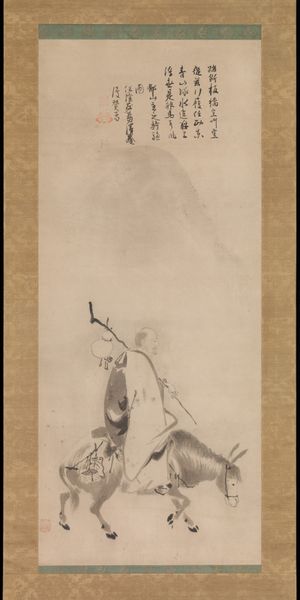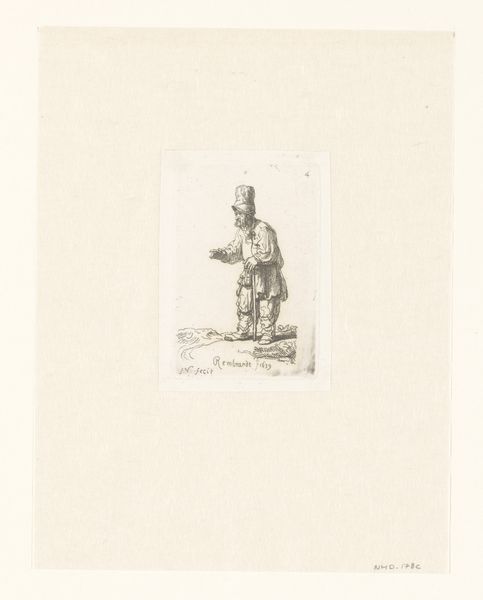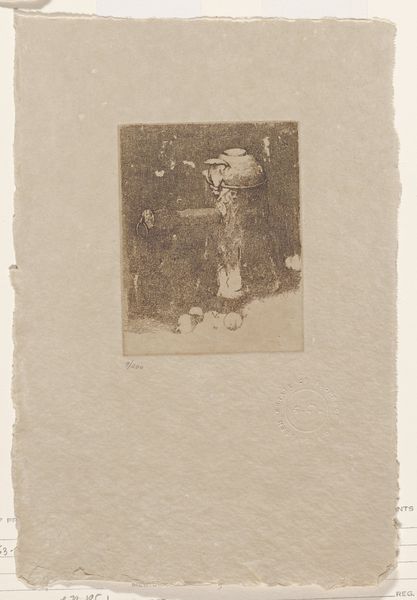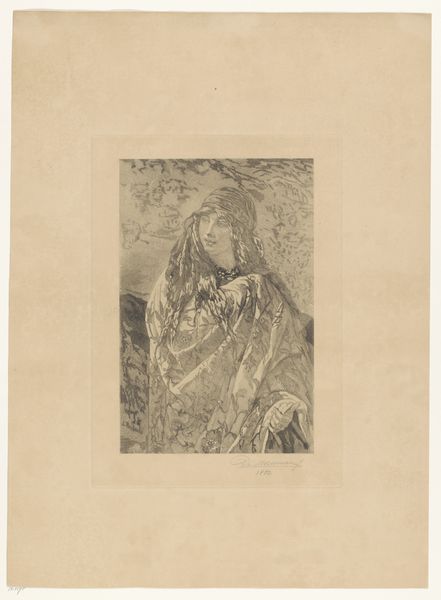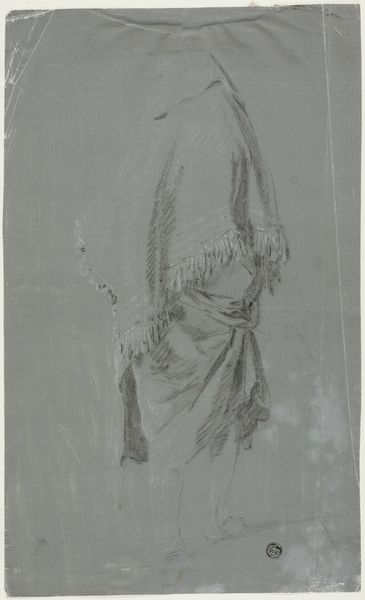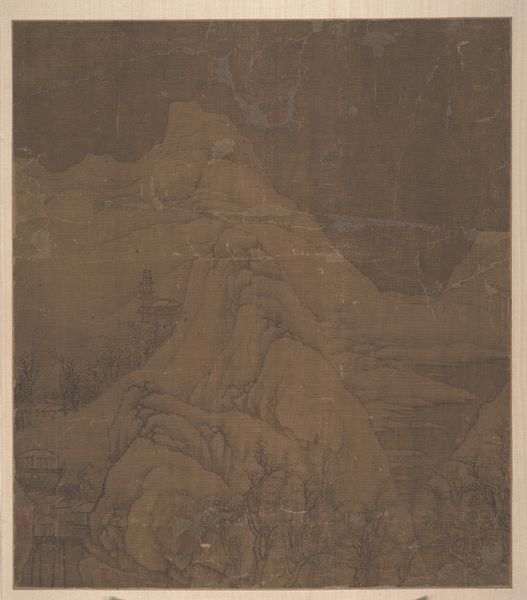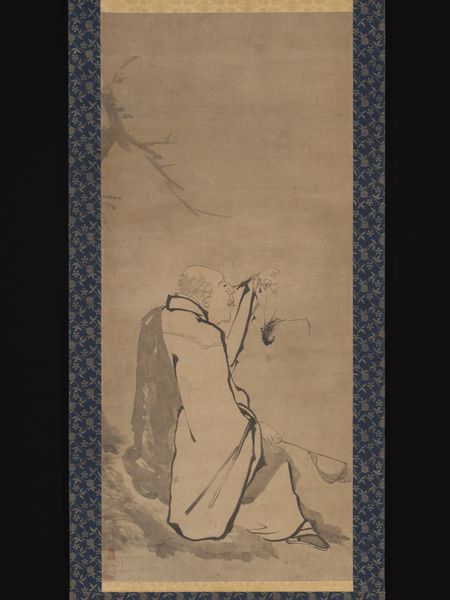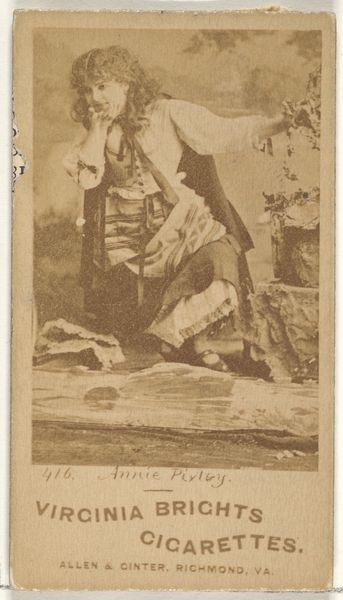
drawing, print, relief
#
drawing
#
statue
# print
#
asian-art
#
relief
Dimensions: height 378 mm, width 268 mm
Copyright: Rijks Museum: Open Domain
Curator: The image we’re looking at, made between 1914 and 1919, is titled "Beeld van de boeddha Avukana bij Kekirawa op Sri Lanka" and it’s attributed to Wijnand Otto Jan Nieuwenkamp. He captured this through drawing and print, creating something between a study and a finished work. What's your immediate reaction to it? Editor: It feels…imposing. Despite the muted tones and the print medium, the scale of the Buddha is immediately evident. It conveys a sense of serene power, looming out of the landscape. There’s also something deeply reverential in the way it's depicted. Curator: Absolutely. The statue itself is a potent symbol of Buddhist philosophy and the quest for enlightenment. The Avukana Buddha, carved almost entirely free-standing from the rock, is not merely a sculpture; it represents an evolved spiritual being. Editor: How does Nieuwenkamp's artistic choice to depict this affect the overall impact? As a print, it carries a different weight than, say, a photograph of the same subject. The print form itself becomes a means of cultural diffusion. Curator: Precisely. The artistic method imbues the image with a certain sense of permanence, almost fossilizing the spiritual weight. Notice the Abhaya Mudra, the hand gesture, is thought to project fearlessness, assurance and divine protection. Editor: It's intriguing how the print aesthetic both enhances and, in a sense, domesticates a symbol that once lived exclusively on the landscape. Now it’s contained, collectable and reproducible, thus broadening the image's visibility. Do we know anything about how this print was received by contemporary audiences? Curator: Archival evidence indicates a certain degree of orientalist exoticism was expected by Europeans from art sourced from the colonies; such imagery reinforced a particular worldview. Prints like this, became instruments for reinforcing narratives about the East. Editor: It’s remarkable how a seemingly straightforward image, when viewed through our current lenses, can reveal a complex interplay of reverence, representation, and even colonial agendas. It certainly invites layers of analysis. Curator: Indeed, what seems initially like a pious tribute actually carries cultural reverberations across history. Thanks for exploring the intricacies of representation alongside me. Editor: It’s a valuable reminder to interrogate both what we see and the conditions that shaped how it came to be visible in the first place. Thank you!
Comments
No comments
Be the first to comment and join the conversation on the ultimate creative platform.
